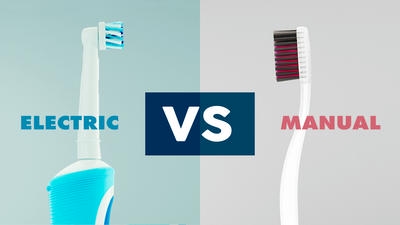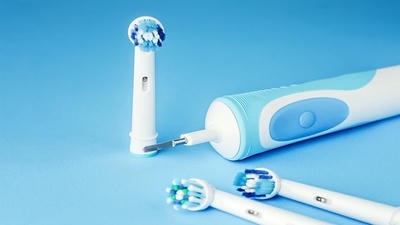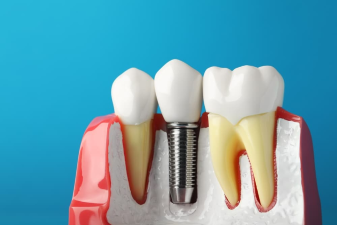Dental hygiene is essential for maintaining not only oral health but also overall well-being. With an abundance of oral care products available on the market, consumers often find themselves asking whether electric toothbrushes truly offer superior benefits when compared to traditional manual toothbrushes.

Introduction to Toothbrushes
Toothbrushes, whether electric or manual, serve the primary function of removing plaque and food particles from the surfaces of teeth. The effectiveness of a toothbrush largely depends on its design, how the user employs it, and the frequency of use. Understanding the differences between electric and manual toothbrushes can help consumers make informed decisions about their dental care.
The History of Toothbrushes
Toothbrushes have been around for thousands of years, with early forms made from tree twigs, animal bones, and bristles. The modern manual toothbrush was first created in the late 18th century, and electric toothbrushes gained popularity in the late 20th century. Today, both types have their advocates and specific features that appeal to different user preferences.
How Electric Toothbrushes Work
Electric toothbrushes generally use oscillating, rotating, or sonic technology to provide cleaning action. Many modern electric toothbrushes come with various settings for different cleaning modes, timers, and pressure sensors that help ensure effective brushing technique.
Types of Electric Toothbrushes
-
Oscillating-Rotating Toothbrushes: These toothbrushes have small round heads that move in circular motions, typically oscillating back and forth at high speeds to enhance plaque removal.
-
Sonic Toothbrushes: Sonic toothbrushes use high-frequency vibrations to create fluid dynamics, helping to push plaque and debris away from the teeth and gums, even in hard-to-reach areas.
-
Ultrasonic Toothbrushes: A more recent development, these toothbrushes operate at a higher frequency than sonic brushes and can produce even greater cleaning efficacy due to their ability to disrupt bacteria and biofilm.
Features of Electric Toothbrushes
-
Timers: Many electric toothbrushes have built-in timers that encourage users to brush for the dentist-recommended two minutes.
-
Pressure Sensors: These sensors alert users if they are applying too much pressure, helping prevent damage to enamel and gums.
-
Automatic Shut-Off: Some models will turn off automatically after a set time, promoting an ending to brushing, especially useful for children.
How Manual Toothbrushes Work
Manual toothbrushes consist of a handle with bristles attached to the head, requiring the user to provide all the motion during brushing. The effectiveness of a manual toothbrush depends greatly on the user’s technique and frequency of brushing.
Types of Manual Toothbrushes
-
Standard Manual Toothbrushes: These come with various bristle types (soft, medium, hard) and shapes. They are simple and effective when used correctly.
-
Interdental Brushes: Designed for cleaning between teeth, these small brushes can effectively remove plaque from areas where regular toothbrushes may not reach.
-
Specialty Toothbrushes: These may include those designed for orthodontic patients with braces, as well as electric spin brushes that offer some mechanical assistance.
Features of Manual Toothbrushes
-
Variety of Bristle Strengths: Users can choose bristle softness according to their dental needs, helping to avoid sensitivity while still achieving effective cleaning.
-
Cost-Effectiveness: Manual toothbrushes are generally cheaper than electric ones and do not require charging or battery replacements.
-
Portability: Manual toothbrushes are lightweight and can be easily transported, making them a practical choice for travel.
Comparing Efficacy: Electric vs. Manual Toothbrushes
Research studies have examined the effectiveness of electric versus manual toothbrushes in terms of plaque removal and gum health. Generally, data suggests that electric toothbrushes tend to outperform manual toothbrushes due to their consistent cleaning motions and advanced features.
Plaque Removal
Studies have shown that electric toothbrushes, particularly oscillating-rotating models, can significantly reduce plaque buildup compared to manual brushing. One analysis of multiple studies indicated that electric toothbrushes removed about 21 percent more plaque after three months of use compared to manual brushes.
Gum Health
Another significant aspect is the impact on gum health. Many electric toothbrushes are designed to be gentler on gums due to their built-in pressure sensors and consistent brushing techniques. Research indicates that using electric toothbrushes can lead to improved gum health and reduced gingivitis compared to manual toothbrushes.
Popular Studies and Findings
-
Meta-Analyses: Systematic reviews of numerous studies show a consistent pattern where electric toothbrushes yield better results in plaque reduction and gum health.
-
Randomized Control Trials: These types of studies often indicate that individuals using electric brushes maintain better oral hygiene over extended periods.
-
Longitudinal Studies: Long-term use of electric toothbrushes has been associated with a decrease in cavities and periodontal disease.

User Experience: Convenience and Ease of Use
While performance metrics are essential, user experience plays a crucial role in the choice between electric and manual toothbrushes.
Convenience of Electric Toothbrushes
-
Less Manual Effort: Electric toothbrushes require less effort, as users do not have to manually scrub but instead guide the brush along their teeth and gums.
-
Engagement Features: Some electric toothbrushes come equipped with Bluetooth technology, allowing users to track their brushing habits via a smartphone app, making dental care more interactive and engaging.
-
Timers and Responsiveness: The built-in timers help ensure adequate brushing time is achieved, which can sometimes be challenging with manual brushing.
User Discomfort with Electric Brushes
While electric toothbrushes are generally user-friendly, some people may feel discomfort or find the vibrations irritating, particularly individuals with sensitive teeth or gums. In contrast, manual toothbrushes allow users to exert control over pressure and speed based on their comfort level.
Manual Toothbrushes: Simplicity and Control
-
Familiarity: Many users feel more comfortable with a manual toothbrush, as they have been the predominant choice for so long.
-
Control: Users can manipulate the pressure they apply, allowing for a more tailored approach to their unique dental needs.
-
Price and Availability: Manual toothbrushes are widely available, go well with most budgets, and do not require investment in batteries or chargers.
Health Considerations: Electric vs. Manual
When considering which toothbrush to choose, health factors are paramount. Both types have their pros and cons, which can greatly affect long-term dental health.
Effectiveness for Children
Some studies suggest that electric toothbrushes may be more effective for children, who may lack the fine motor skills required for proper manual brushing. The ease of use and built-in features in electric models encourage better brushing habits, leading to improved oral hygiene in young users.
Special Needs Considerations
For individuals with disabilities or limited dexterity, electric toothbrushes may provide a more accessible option. Features like automatic brushing and comfortable grips make them easier to handle compared to manual toothbrushes.
Environmental Concerns
Manual toothbrushes tend to have a smaller carbon footprint compared to their electric counterparts. Electric toothbrushes require electronic components, batteries, and energy to operate. Users concerned about environmental sustainability may lean towards choosing manual brushes.
Cost Analysis: Is the Investment Worth It?
When deciding between electric and manual toothbrushes, cost is a significant consideration. Electric toothbrushes typically come with higher upfront costs, while manual toothbrushes are more budget-friendly.
Initial Investment
-
Electric Toothbrushes: Prices vary based on brand and features, with basic models starting around thirty dollars and premium models costing upwards of two hundred dollars or more.
-
Manual Toothbrushes: Generally, manual toothbrushes cost between one and five dollars, making them accessible to nearly everyone.
Long-Term Costs
Over the lifespan of the toothbrush, it is essential to consider the replacement costs. Electric toothbrush heads need to be replaced approximately every three months, which can add to the overall expense. Manual toothbrushes should also be replaced regularly, although their cost remains lower overall.
Value for Money
While electric toothbrushes require a more significant initial financial outlay, users may find that the benefits in plaque reduction, gum health, and overall oral hygiene could justify the expense. Many see the additional cost as an investment in their long-term dental health.
Conclusion: Making the Right Choice for You
The question of whether electric toothbrushes are better than manual ones ultimately hinges on individual preferences, habits, and dental health needs. While research generally supports the effectiveness of electric toothbrushes in terms of plaque removal and gum health, both types can be effective if used correctly and consistently.
Key Takeaways
-
Effectiveness: Electric toothbrushes tend to outperform manual ones in studies involving plaque removal and gum health improvement.
-
User Experience: Electric toothbrushes offer convenience, engagement, and ease, while manual brushes provide control and simplicity.
-
Cost Considerations: Manual toothbrushes are more affordable initially but require consistent replacement. Electric brushes entail a higher upfront cost but may provide better long-term value through improved oral health.
In the end, the best toothbrush for you is one that you will use regularly, effectively, and comfortably. Maintaining excellent oral hygiene involves consistent brushing, flossing, and regular dental check-ups, regardless of the type of toothbrush you choose.



